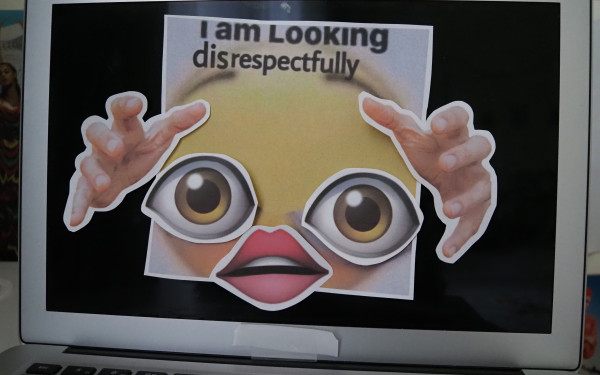Concordia’s grassroots rocket engineers vie for victory in Canada’s intercollegiate space race
Learn about Launch Canada and how a team of student engineers is working towards launching a rocket this summer. Graphic Joey Bruce
22 teams to meet and compete in Canada’s premier rocket launch and design competition
This summer, more than 1,000 students will compete in Launch Canada, the first rocket competition of its kind in the country. In a contest which will take teams from design through launch, teams will aim to successfully launch a rocket 30,000 feet into the air, hitting twice the speed of sound before a controlled landing and recovery.
This summer, more than 1,000 students will compete in Launch Canada, the first rocket competition of its kind in the country. In a contest which will take teams from design through launch, teams will aim to successfully launch a rocket 30,000 feet into the air, hitting twice the speed of sound before a controlled landing and recovery.
This event was founded in 2019 by rocket engineer Adam Trumpour after seeing the success of similar rocket launching contests in the U.S.. Its objective is to provide a framework for students to design, build, and launch a professional rocket.
The Concordia Institute of Aerospace Design and Innovation is currently in the process of building their entry to this contest, a length by width sized solid-propellant rocket.
“The whole goal of the competition is for rocket teams across Canada to show their abilities as engineering students,” said Olivia Sahai, a member of CIADI's structures team.
CIADI itself is but one of two teams from Concordia. The other, Space Concordia, aims to compete in a different category, the subsystem design challenge. This challenge, according to Launch Canada’s website, places a stronger emphasis on “the entrepreneurial aspect of technology development,” with a heavy premium placed on presentation. Although Space Concordia plans to test a liquid rocket engine for the contest, no launch is set to occur at Launch Canada.
Pierce Reid, who leads the CIADI rocket team, was originally a member of Space Concordia. However, he feared he might not be able to actually participate in a launch before graduating, which led to him breaking off and joining CIADI. “We hadn’t launched a rocket since 2018,” he said. “That’s an entire generation of [students] who’d never launched rockets.”
Project Continuity, the name of the rocket, responds to this problem. "The whole point of this rocket [...] is to give younger engineering students the knowledge to continue in the footsteps of the older students," said Sahai.
CIADI’s rocket is both smaller and cheaper than the one launched in 2018. “It lets you focus on the fundamentals, and that should just be launching the rocket,” said Reid.
Sahai stated that rocketry is a demanding field and there are countless opportunities to make a mistake. “It’s just getting the rocket off the ground. For a lot of people, it doesn’t even really go up,” she said. “It just kind of explodes. In rocketry, everything is super intricate and precise. Every rivet needs to be put at a certain angle.”
“We hadn’t launched a rocket since 2018. That’s an entire generation of [students] who’d never launched rockets.” — Pierce Reid
About the competition, she said, “it’s about how different minds approach the same problem. There’s many different ways to design a rocket for the same end goal. So the rockets are roughly similar, but [there will be] differences in, for example, nose-cone shape, the number of fins, the shape, height and width.”
Because the team doesn't yet have access to a workshop, much of the work is currently being done by cycling through the apartments of the team’s different members. However, the team does its best to maintain safety precautions while assembling parts and materials in their living rooms.
Although the venture is first and foremost a learning opportunity, the experience of the team, as well as the equipment available to them, will be crucial in securing a win, said Reid.
According to him, Concordia’s Automated Fiber Placement machine could be the game changer. “They’re basically large 10-foot tall multi-million dollar robotic arms that can very accurately place strips of composites with the perfect amount of fiber or resin so that it has the highest possible strength-to-weight ratio.”
Many of the other teams will have to accomplish this work by hand. “So they get a piece of carbon fiber or fiberglass and they’ll soak it in epoxy and apply it, but there’s usually too much or not enough epoxy, the angle of the fibers isn’t optimized, there’s folds. There’s a lot of points of failure which can cause the fuselage to not only be heavier, but weaker as well.”
However, beyond experience and machinery, most schools have access to the same plans and off-the-shelf parts, meaning some of the challenges of the competition lie beyond rocketry itself.
“The most stressful part isn't making the rocket,” said Reid. “The hard part is getting funding. It’s presentation, coordination. It’s the forward planning, knowing all the lead times and being able to interact with various faculty and facilities to produce a rocket in eight months. It’s a logistical nightmare.”
Although CIADI was able to find sponsorships to cover the rocket's $50,000 price tag, its GoFundMe is still struggling to manage part of this amount. “The motor is expensive. The materials we’re using need to be machined in a very specific way—the more specific the more expensive,” said Sahai. Launch Canada’s prize money is $30,000, which will be reinvested into Concordia’s rocketry endeavors if they win, she said.
As Trumpour searches for a launch site, however, Launch Canada’s unprecedented nature proves both an asset and a setback . “In Canada, we have perfectly suitable land for this, but don’t have means of getting access to it," he indicated.
Many areas near the Arctic, which are clear and deserted, would be perfect launch sites were they not completely unreachable by road. Further south, launching in a forested environment essentially guarantees that teams won’t be able to retrieve their rockets after launch. In the prairies, the risk is accidentally starting fires.
“But it’s also a legal swamp of complications,” said Trumpour. To operate, the contest requires a radius of 10 to 20 km, which amounts to an area slightly bigger than the island of Montreal. This often means querying permits from multiple property owners and jurisdictions. Yet, this process is complicated even further by the fact that no one had ever attempted such a contest in Canada before 2019. Although Trumpour has currently made inroads with a selection of Canadian Forces Bases across the country, it is still unknown which, if any, will be able to host the competition.
“If you want to innovate in aerospace, this is one of the best ways to do it.” — Adam Trumpour
In October 2021, Trumpour and a handful of Launch Canada participants gathered in the parking lot in Welland, Ontario to test a liquid rocket engine of Trumpour’s own design, which would have been capable of reaching the stratosphere were it not secured to the ground by 80,000 lbs of concrete.
The test went off without a hitch, but nevertheless speaks to the lack of existing infrastructure for Canada’s burgeoning rocketry sector.
Trupour feels Canada tends to focus too intently on the areas at which it excels, such as robotics, telecommunications, and remote sensing, “But we forget that there was a time when we weren’t good at those things. If all you ever do is more of the same, then you’ll never change and evolve. You might find that the world changes around you and you’ll fail to perceive new opportunities.”
Trumpour added people like him actively disprove the idea that rocketry can’t flourish in Canada. “Here is a significant liquid rocket engine I built in my garage in my spare time on a junior engineer’s disposable income. Just imagine what this could look like with actual support behind it," he said, referencing the Atlas-Centaur's LR-101 engine he tested in Welland.
He also highlighted that contests like these are the perfect place to take risks engineers usually can’t. “Rocketry is an area of engineering that is very high cost and high skill. The cost of failure is a lot higher, so the aerospace industry tends to be notoriously risk-averse. It’s very easy to spend millions of dollars on something only to find out it’s not workable.”
However, given that student teams don’t have to pay their staff, that much of their equipment is provided to them by their respective schools, and that they can garner corporate sponsors, they can undertake a sophisticated research and development project that could otherwise cost a company millions of dollars, said Trumpour.
“Because they’re not doing this to deliver a project on schedule under budget, it means they can take on a level of technical risk no company would ever touch,” added Trumpour. “They can try something crazy because it doesn’t actually have to work. [...] If you want to innovate in aerospace, this is one of the best ways to do it.”
For Trumpour, this push is as much about empowering young engineers as it is securing the future of Canada’s rocket industry. Notably, he feels the country has gone astray in realizing the importance of launch capabilities.
He hopes Launch Canada will bring awareness to how crucial access to space can be. “Everything from how we communicate, how we study our planet and the world around us, how we know about what climate does, how we keep track of things in our airspace and our waters: all of that would be impossible without space,” he said. “If we acknowledge that what’s in space is essential to our everyday lives, then the ability to get it there becomes pretty foundational.”
“These are students that are going to the next level to learn the kind of engineering skills most people don’t know after five years in the field, and they’re doing this in their spare time.” — Adam Trumpour
Nevertheless, Canada’s aerospace industry remains small. This is despite the fact that, when competing against American teams, Canadians disproportionately take home first place. In 2018, they won first place in five categories out of seven at the Spaceport America Cup.
Yet Trumpour said this victory is bittersweet, as American rocket companies can’t typically hire from outside the country due to secrecy laws.
“So, they’ll win first prize and have the HR [representative] from SpaceX come to them and say, ‘Hey we’d hire you all right now, but we can’t. Have some keychains.’ And they return to a country where no one really even knows they exist,” he said.
Trumpour hopes the expertise afforded to them by the competition will be able to turn Canadian rocketry into a thriving industry.“These are students that are going to the next level to learn the kind of engineering skills most people don't know after five years in the field, and they're doing this in their spare time,” he said.
Sahai’s time preparing for the competition speaks to how beneficial it can be. “I came into this knowing absolutely nothing,” she said. “I was a first-year [student] and just wanted to know a bit about rockets. But I ended up being a part of this really cool team and gaining so much experience and knowledge.”
As CIADI moves from the design phase to the manufacturing of its rocket, Reid and Sahai hope their efforts will come to fruition, but, regardless, are thankful for the opportunity. CIADI and other teams will launch their rocket this summer.


1_600_375_90_s_c1.jpg)
1_600_375_90_s_c1.jpg)
